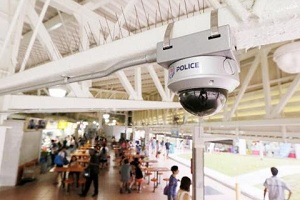Singapore is looking to expand its use of cameras and technology to better support law enforcers and first responders. These include plans to tap sensors, video analytics, artificial intelligence (AI), automation, and drones to ease manpower shortages and improve service efficiencies.
As it is, the police have deployed almost 90,000 cameras in public locations, such as car parks and residential estates, across the island. And “many more” will be rolled out in the coming years, according to Minister for Home Affairs and Minister for Law K Shanmugam, who spoke at Parliament.
Describing these cameras as “a game-changer” in deterring and investigating crimes, he said the devices had helped the police solve 4,900 cases as of December 2020. Shanmugam noted that there were limits to resources and manpower, and his ministry had focused on transformation with increased use of technology to address the shortage.
Neighbour police centres and police posts, for instance, have been redesigned to include automated self-help kiosks, so citizens could police services 24/7, he said. Some 300 next-generation fast response cars will also hit the roads by 2023, equipped with cameras capable of providing a 360-degree view of their surroundings back to the Police Command Centre. This would enable agents at the command centre to assess the situation and deploy backups, he said. The vehicles would be armed with video analytics technology to read number plates and automatically flag vehicles of interest. “So you will be surrounded by sensors, which make people feel safer and more confident,” the minister said.
In addition, the police have been trialling beacon prototypes for a year, enabling the public to contact law enforcements directly during emergencies. Located across two residential estates, these beacons are equipped with various capabilities to “create deterrence and project presence”, he said, adding that they also have CCTV cameras to allow the police to assess the situation quickly.
Beyond the law, efforts are underway to build “smart” fire stations that would make greater use of sensors and automation to facilitate operational response, decision making, and manpower management. Manual processes such as tracking the readiness of emergency supplies, vehicles, and personnel rostering would be automated, said Shanmugam.
An AI-powered system would also send information during an emergency, such as a building’s floor plans and on-site live video feed, to officers before they arrived at the location. This would enable them to better assess the situation, develop a plan more quickly, and improve their response.
Emergency first responders also would have smart wearables that were integrated with the smart fire station’s systems, enabling commanders to monitor their officers’ physical condition during operations and training.








